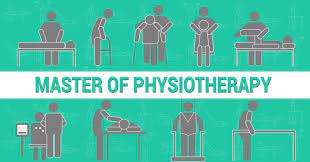
What is Orthopaedic Physiotherapy?
Orthopaedic Physiotherapy primarily focus on orthopedics and treatment conditions affecting the musculoskeletal system, which are composed of joints, muscles, bones, ligaments, and tendons.It diagnoses, manage, and cure the disorders of the musculoskeletal system and recuperate patients after the orthopaedic surgery. Any condition that causes pain or limited functional mobility as a result of an injury to bony or soft tissue structures in your body may benefit from the skilled services of orthopedic physical therapy.
Orthopedic injuries and conditions may include:
- Fractures
- Muscle strains
- Ligament sprains
- Post-operative conditions
- Tendonitis
- Bursitis
Sever pains are associated with an injury that occurs to the bones, joints, ligaments, or muscles, and makes mobility difficult hindering daily task functions. With an experienced qualified Orthopaedic Physiotherapist, success rate for healing becomes much higher as they provide a tailor-made treatment program with exercises that can be done at home to help increase strength and range of motion, getting you on the road to a successful recovery.
The Inter-Relationship Between Musculoskeletal Physiotherapy & Orthopedics
Physiotherapist discusses the inter-relationship between “musculoskeletal and orthopedics” as follows:
“Musculoskeletal Physiotherapy is the term used to describe the field of physiotherapy, which relates to disorders of the musculoskeletal system. The term musculoskeletal refers to muscles, bones, joints, nerves, tendons, ligaments, cartilage, and spinal discs.
Musculoskeletal Physiotherapy utilizes the basic sciences of anatomy, physiology and biomechanics as background theory in the assessment and management of patients. Approaches to management in the field of musculoskeletal physiotherapy involve not only ‘manipulation’, but also manual assessment and treatment techniques, specific therapeutic exercise, electrotherapy and advice on posture and movement disorders.”.
This makes sense that orthopedic physiotherapy is the foundation that physiotherapists acquire as they further develop their physiotherapy practice to focus on unique areas of interest and populations. There is a lot to know about the body, how it functions, and how it is meant to move. If the basic framework of the body cannot sustain itself, then all other systems struggle.
An example of this is when someone has a decreased lung capacity – whether from disease or deconditioning. If they require an exercise program to improve their lung function but have limited ribcage expansion for example – then just simply having the patient do cardiovascular exercises may not be a satisfactory rehabilitation plan. This type of person would benefit from seeing an orthopedic physiotherapist to help mobilize (“move”) the joints in and around the ribcage, release or retrain the muscles of the diaphragm and spine that connect to the ribcage. Combined with the orthopedic treatment, the cardiovascular system has a better chance of optimizing its function and recover.
What types of treatments are used?
Orthopedic PTs use a wide range of therapeutic modalities, exercises, assistive devices, and patient education methods to help you.
Depending on how your therapist uses these treatments, they may be:
- passive modalities (the therapist gives you a treatment), or
- active modalities (you perform or participate in a movement)
Here are some examples of treatments that may be used with orthopedic physical therapy.
How can you get the best results from orthopedic physical therapy?
To get the most out of each physical therapy session, it’s important to:
- Work with a PT you trust and feel comfortable with. One of the most important elements in your treatment is the trust you build with your therapist.
- Ask questions if you’re not sure about any part of your treatment plan.
- Set clear, realistic goals you can measure.
- Be honest about your pain tolerance.
- Follow through on your home exercise plan. If you aren’t sure how to do an exercise, or how often, make sure you discuss this with your physical therapist.
- Go to all of your appointments, even if you’re feeling better.
